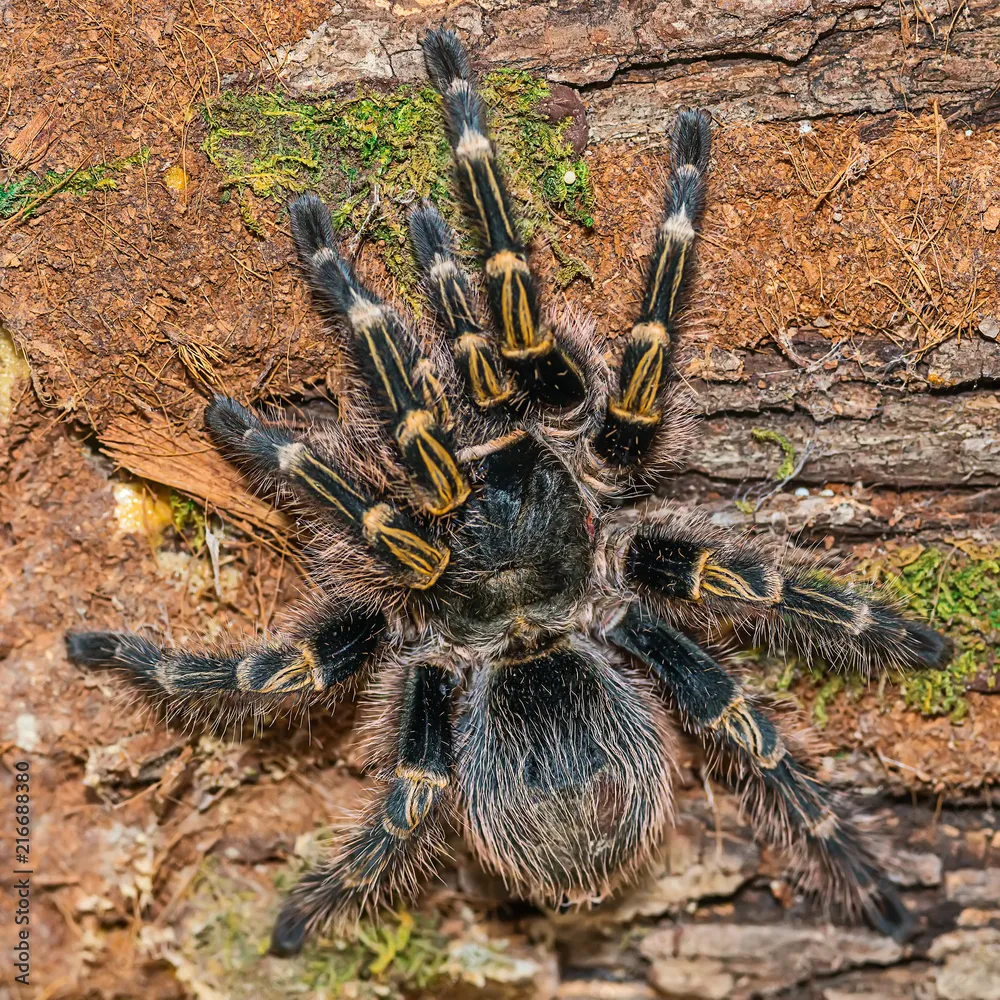Choosing the Best Tarantula Terrarium
Choosing the right terrarium is crucial for the health and well-being of your tarantula. A well-suited enclosure provides a safe, comfortable, and enriching environment, allowing your pet to thrive. This guide will help you navigate the essential aspects of selecting the perfect terrarium, from size and material to essential accessories. Ensuring your tarantula has the proper habitat is the first step towards responsible pet ownership and enjoying the fascinating world of these arachnids. Proper terrarium selection prevents potential issues and offers a better quality of life for your tarantula.
Size Matters Finding the Right Dimensions
The size of your tarantula terrarium is a critical factor in its overall well-being. A terrarium that is too small will restrict movement and prevent the tarantula from exhibiting natural behaviors. Conversely, a terrarium that is excessively large can make it difficult for the tarantula to find food and feel secure, potentially leading to stress. The ideal size is usually determined by the tarantula’s leg span, with the enclosure being roughly three times the tarantula’s leg span in width and length. The height should allow sufficient space for the tarantula to move and, if applicable, to dig or climb.
Tarantula Size and Species Considerations

Different tarantula species have different size requirements. Arboreal species, those that live in trees, typically need taller enclosures to allow for climbing. Terrestrial species, which live on the ground, require more floor space. Consider the adult size of the species you intend to keep. Juvenile tarantulas can start in smaller enclosures, but they will eventually need to be moved to larger ones as they grow. Research the specific needs of your tarantula species to ensure you provide the most appropriate living space. This research is a crucial step towards offering your pet a comfortable habitat.
Enclosure Ventilation Requirements
Adequate ventilation is essential to prevent the buildup of excess humidity and stale air, which can lead to mold growth and respiratory issues for your tarantula. Terrariums should have a combination of top and side ventilation. The ventilation should be sufficient to allow for proper airflow without causing the enclosure to dry out excessively. Mesh tops are common, but ensure the mesh is fine enough to prevent escapes while still allowing for proper ventilation. Avoid enclosures with poor ventilation, as these can quickly become unhealthy environments for your tarantula. Ventilation is key to maintaining a healthy habitat.
Material Selection Glass vs Acrylic
The material of your tarantula terrarium is another important consideration. Glass and acrylic are the two most common materials used. Each has its own advantages and disadvantages. The choice between glass and acrylic will depend on your personal preferences, budget, and the specific needs of your tarantula. Both can provide a suitable environment when properly equipped and maintained. Evaluating the pros and cons of each material will help you make an informed decision. A good choice will last years and provide an optimal living space for your pet.
Benefits of Glass Terrariums

Glass terrariums are generally more scratch-resistant than acrylic and can withstand regular cleaning and handling. Glass also tends to be less expensive upfront. They are typically clearer than acrylic, providing a better view of your tarantula. Glass terrariums also offer better heat retention, which can be beneficial in maintaining the required temperature gradient. Many prefer glass for its classic look and the way it integrates with home décor. Glass is often considered the standard for its durability and aesthetic appeal.
Advantages of Acrylic Terrariums
Acrylic terrariums are lightweight and less prone to shattering if dropped. They often provide better insulation, helping to maintain a stable temperature and humidity level. Acrylic is also more resistant to cracking and can be molded into various shapes and sizes. Some acrylic enclosures come with integrated features like pre-drilled holes for ventilation and easy-access doors. Acrylic terrariums can be easier to clean and maintain due to their smooth surfaces. They also provide a clearer view, minimizing visual distortion.
Top 5 Best Tarantula Terrariums
Here are our top 5 picks for the best tarantula terrariums, considering various factors like size, material, and features. These recommendations are based on a balance of quality, functionality, and value, helping you choose the best option for your pet.
Terrarium Pick 1 [Name and Details]
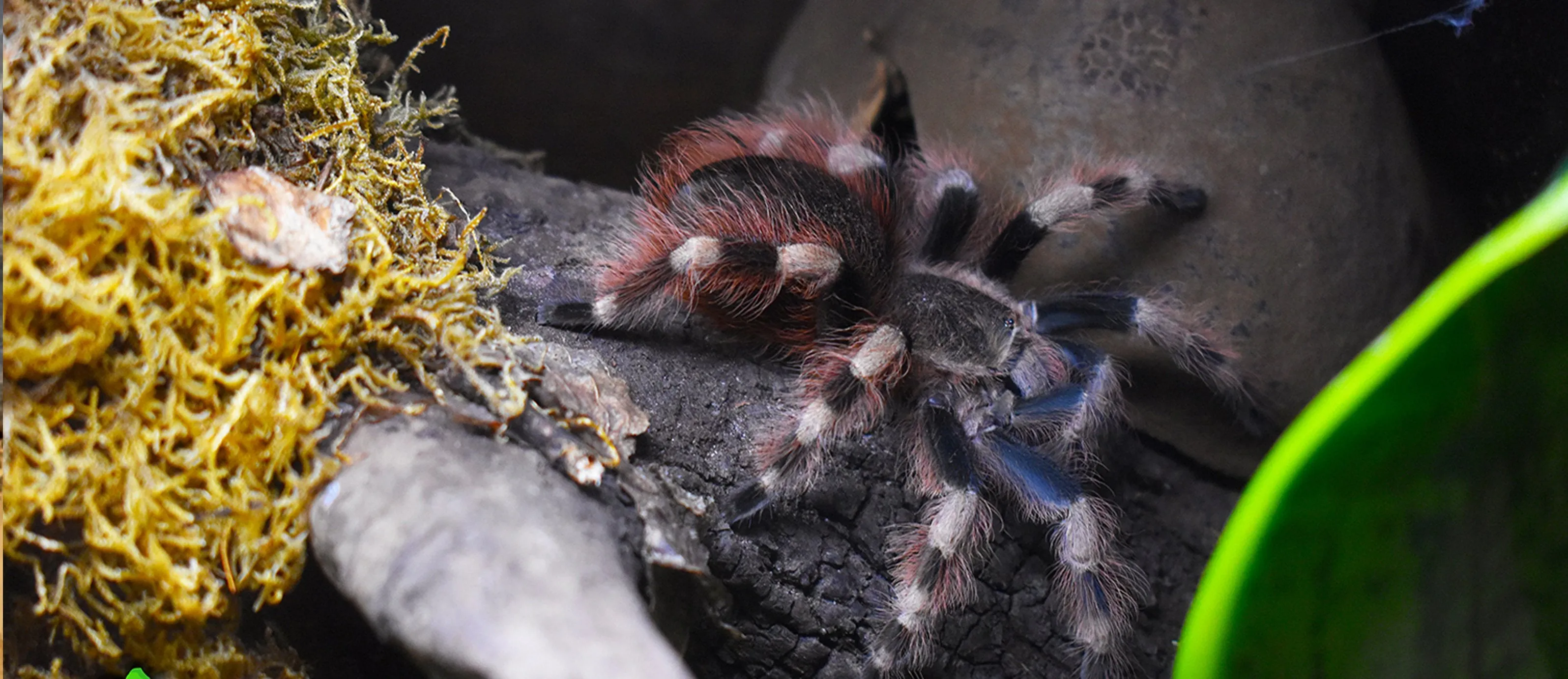
Include specific terrarium brand and model here. Discuss its dimensions, material (glass or acrylic), and any special features. The key here is to highlight the specifics of each terrarium, providing potential buyers with detailed information to inform their choice.
Key Features of Pick 1
- Durable construction
- Excellent ventilation
- Secure locking mechanism
Pros and Cons of Pick 1
- Pros Affordable, easy to clean
- Cons May require additional humidity control
Terrarium Pick 2 [Name and Details]
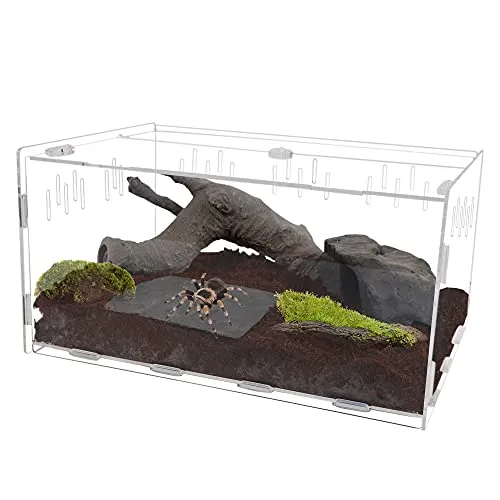
Here, you’ll present another terrarium, detailing its specifications like the first example. Provide a thorough overview to help readers compare their choices, and show the options available to them. The more information you provide, the better the decision making of your readers will be.
Key Features of Pick 2
- Built-in humidity control
- Easy access door
- Clear visibility
Pros and Cons of Pick 2
- Pros Excellent insulation
- Cons Can be more expensive than other options
Terrarium Pick 3 [Name and Details]
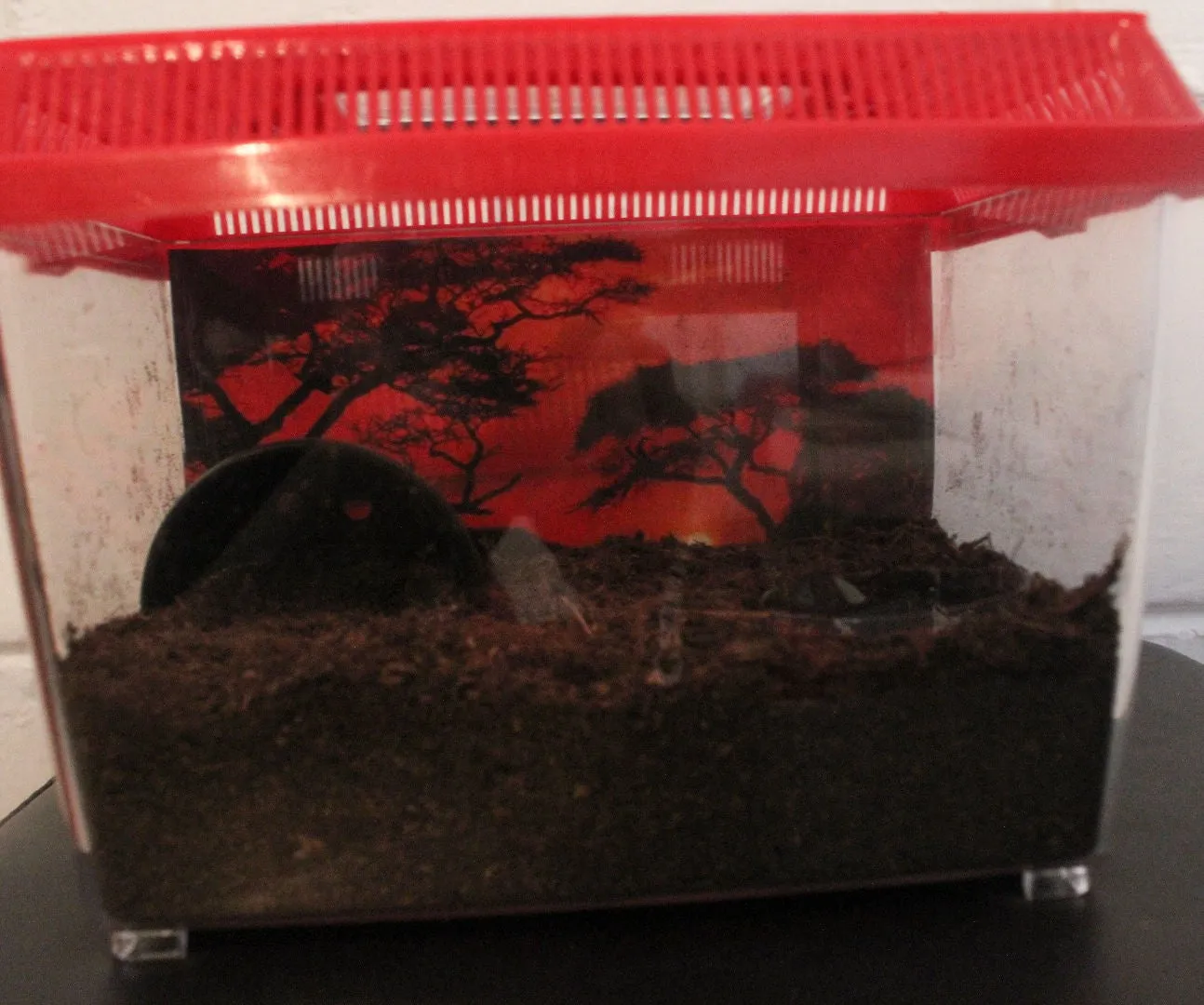
Present the third terrarium with a similar approach to the first two. Include a different brand or model, highlight its features and detail the advantages and disadvantages. This is a way to provide a variety of options. Each pick is designed to provide a comprehensive overview of the available options, helping readers make informed choices based on their needs.
Key Features of Pick 3
- Multiple ventilation options
- Lightweight and portable
- Scratch-resistant material
Pros and Cons of Pick 3
- Pros Durable and versatile
- Cons Smaller than some alternatives
Terrarium Pick 4 [Name and Details]
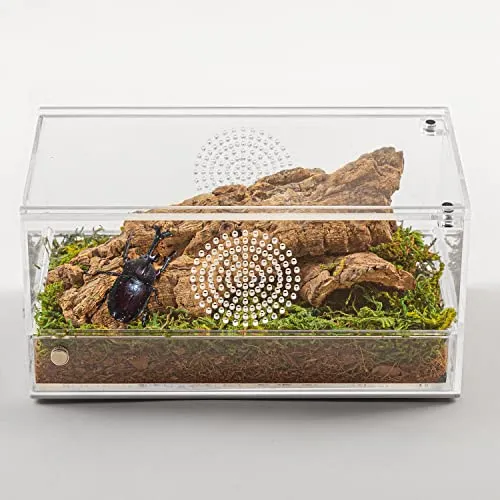
The fourth terrarium follows the same format, featuring a specific model and providing details that are useful for potential buyers. This pick should be slightly different from the previous options, offering a range of choices to accommodate different species, sizes, and needs. Be sure to include any specific details relevant to the model, emphasizing its strengths and weaknesses.
Key Features of Pick 4
- Easy setup
- Secure lid
- Suitable for beginners
Pros and Cons of Pick 4
- Pros Affordable and easy to use
- Cons Limited size options
Terrarium Pick 5 [Name and Details]
Our final pick presents the fifth terrarium, giving you a complete list for readers to compare. Focus on another unique model, giving details to help the reader’s final decision. All terrariums should be diverse, covering a variety of materials, sizes, and additional features. Concluding this list with a summary will wrap up this section, providing a clear, comparative view.
Key Features of Pick 5
- Includes built-in hygrometer
- Stylish design
- Good ventilation
Pros and Cons of Pick 5
- Pros Great for humidity and temperature
- Cons More expensive
Essential Accessories for Your Tarantula Terrarium
Beyond the terrarium itself, several accessories are crucial for creating a healthy and stimulating environment for your tarantula. These accessories help maintain the right conditions and provide enrichment for your pet. These will help ensure your tarantula’s overall well-being. Investing in the right accessories contributes significantly to the quality of life for your tarantula.
Substrate and its Importance
The substrate is the bedding material that forms the base of your tarantula’s habitat. It serves several important functions. Substrate helps maintain humidity, provides a surface for the tarantula to burrow or hide in, and absorbs waste. Common substrate choices include coconut fiber, peat moss, and vermiculite. The best substrate will depend on your tarantula’s species. Avoid substrates that are too dusty or that could potentially be harmful if ingested. Consider the natural habitat of your tarantula when selecting the substrate. Regularly changing the substrate is vital for maintaining hygiene.
Water Dish and Hydration
Providing a clean and accessible water source is essential for tarantula hydration. A shallow water dish should be placed in the terrarium, ensuring that your tarantula can easily access it. The dish should be stable and not easily tipped over. Regularly check and refill the water dish with fresh water, typically every day or two. Avoid using tap water unless it has been dechlorinated, as chlorine can be harmful to tarantulas. Consider using a water gel in smaller enclosures to avoid drowning hazards. Maintaining a hydration source will help your tarantula’s health.
Hiding Places and Decor
Tarantulas are naturally reclusive creatures and require hiding places to feel secure. Provide your tarantula with a hide, such as a cork bark, a hollow log, or a commercially available hide. The hide should be large enough for the tarantula to comfortably fit inside. Decorating the terrarium with plants, branches, or other natural elements can also provide enrichment and a more natural environment. Avoid using sharp or abrasive decor that could potentially injure your tarantula. Plants can also help with humidity and offer a more natural habitat.
Maintaining the Ideal Terrarium Environment
Maintaining the right environment is crucial for the well-being of your tarantula. This involves controlling temperature, humidity, and keeping the enclosure clean. Proper care will keep your tarantula in optimal health, as well as creating a habitat for your pet to thrive. Regular monitoring and adjustment are key to providing the best possible environment.
Temperature and Humidity Control
Temperature and humidity levels vary depending on the species of tarantula. Research the specific requirements of your pet and use a thermometer and hygrometer to monitor the conditions inside the terrarium. Maintain the appropriate temperature using a heat source, such as a heat mat or a ceramic heat emitter, ensuring that the heat source is properly regulated. Humidity can be controlled by misting the enclosure with water and by adjusting the ventilation. Ensure the temperature and humidity levels are within the optimal range for your specific species. Monitor the terrarium conditions daily to make the necessary adjustments.
Cleaning and Maintenance
Regular cleaning and maintenance are essential to prevent the buildup of waste, mold, and other potential health hazards. Spot clean the terrarium daily by removing any uneaten food, feces, and shed exoskeletons. Replace the substrate periodically, typically every few months, or more frequently if needed. Clean the water dish and any other accessories regularly. Thoroughly clean the terrarium with a reptile-safe cleaner during substrate changes. Maintaining cleanliness and hygiene is key to prevent health issues and provide a healthy environment for your tarantula. Maintaining the enclosure helps to prevent disease and ensures your pet’s comfort.
Choosing the best terrarium for your tarantula is an important step towards providing it with a healthy and fulfilling life. By considering the factors discussed above—size, material, accessories, and maintenance—you can create an optimal environment for your pet to thrive. Remember that research and understanding of your specific tarantula’s needs are essential. Providing a suitable terrarium is the first step in enjoying the fascinating world of tarantula keeping.
